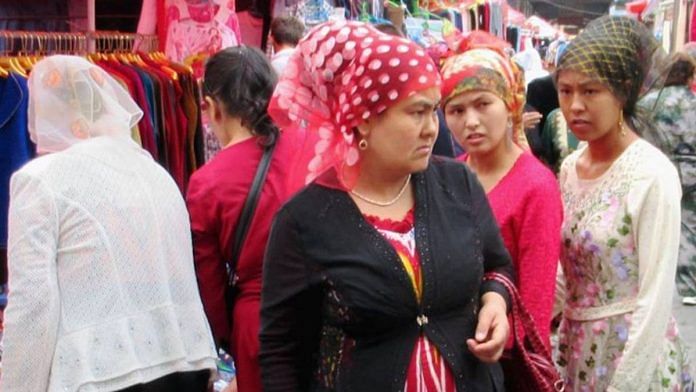New Delhi: “China’s regime of censorship over Xinjiang is intensifying. Researchers and journalists no longer have meaningful access to the region and the United Nations has been blocked from conducting their fact-finding missions,” James Leibold, one of the authors of the Australian Strategic Policy Institute’s report on the Uyghur population in Xinjiang, said in an interview Wednesday.
The report published by the Australian Strategic Policy Institute (ASPI), a Canberra-based think-tank, last week drew strong criticism from the Chinese foreign ministry. Founded by the Australian government, ASPI is partly funded by the country’s Department of Defence.
The report said the birth rate in Xinjiang had dropped by 48.74 per cent between 2017 and 2019, amid the ongoing crackdown on Uyghurs, a Turkic-speaking group, and other ethnic minorities in the region.
In response, Chinese foreign ministry spokesperson Hua Chunying shared figures to show growth in the Uyghur population in Xinjiang in the past 40 years.
China continues to face scrutiny from the international community over its treatment of Uyghurs in Xinjiang. Lithuania became the latest country Friday to term what is happening in the region as “genocide”. In the past, the US and parliaments in the UK and Canada have used the same term to describe China’s actions.
Beijing has condemned countries for using the term, and branded it a propaganda against China. It has also slammed news outlets like the BBC, for reports exposing alleged systematic rape and sexual abuse in camps for ethnic Uyghurs.
Also read: India needs to be more India, not China. ‘Dictator envy’ won’t lead us out of crisis
Birth control and falling numbers
The report by the Australian think tank said Beijing has carried out “systematic efforts to reduce the size of the indigenous population of Xinjiang through a range of coercive birth-control policies”.
Responding to the report, Chinese foreign ministry spokesperson Hua Chunying, in a press conference last Thursday, said, “I wonder how the ASPI arrived at its conclusion that birthrate in Xinjiang fell by 48.74 per cent from 2017 to 2019.”
She added that over the last 40-plus years, the Uyghur population in Xinjiang has more than doubled, from 5.55 million to over 12 million and that between 2010-2018, it increased by 25 per cent — “notably higher than the 2 per cent [growth] for the ethnic Han group”.
Nathan Ruser, co-author of the report, responded to the spokesperson on Twitter last week, providing screenshots from China’s National Statistical Yearbook, showing how the birth rate in Xinjiang dropped to 8.14 per cent in 2019 from 15.88 per cent in 2017.
China had released its national census data last week, which showed that the number of people living in Xinjiang region was 25.9 million last year, up 2.5 per cent from a year earlier, reported Global Times.
Also read: Why the suspicion on China’s Wuhan lab virus is growing. Read these new analyses
Tales of trauma
The evidence in the report also includes stories of trauma from Xinjiang.
According to the report, a Uyghur widow in Uchturpan County, had her pension docked by 20 per cent in 2018, after failing to pay a fine for an ‘illegal’ birth.
The report also claimed that party officials in Chapchal County collected nearly US$1 million in fines for 629 cases of ‘illegal’ births over a four-month period in late 2017, after deploying 85 new family-planning specialists to villages across the county.
Data released by China in February showed that the number of new birth registrations in the country in 2020 was 10.035 million, compared with 11.8 million in 2019 — a 15 per cent drop. However, registration figures do not necessarily reflect all births as some may be missed, hidden or delayed.
(Edited by Poulomi Banerjee)
Also read: China has got rid of extreme poverty, but the poor haven’t gone away



